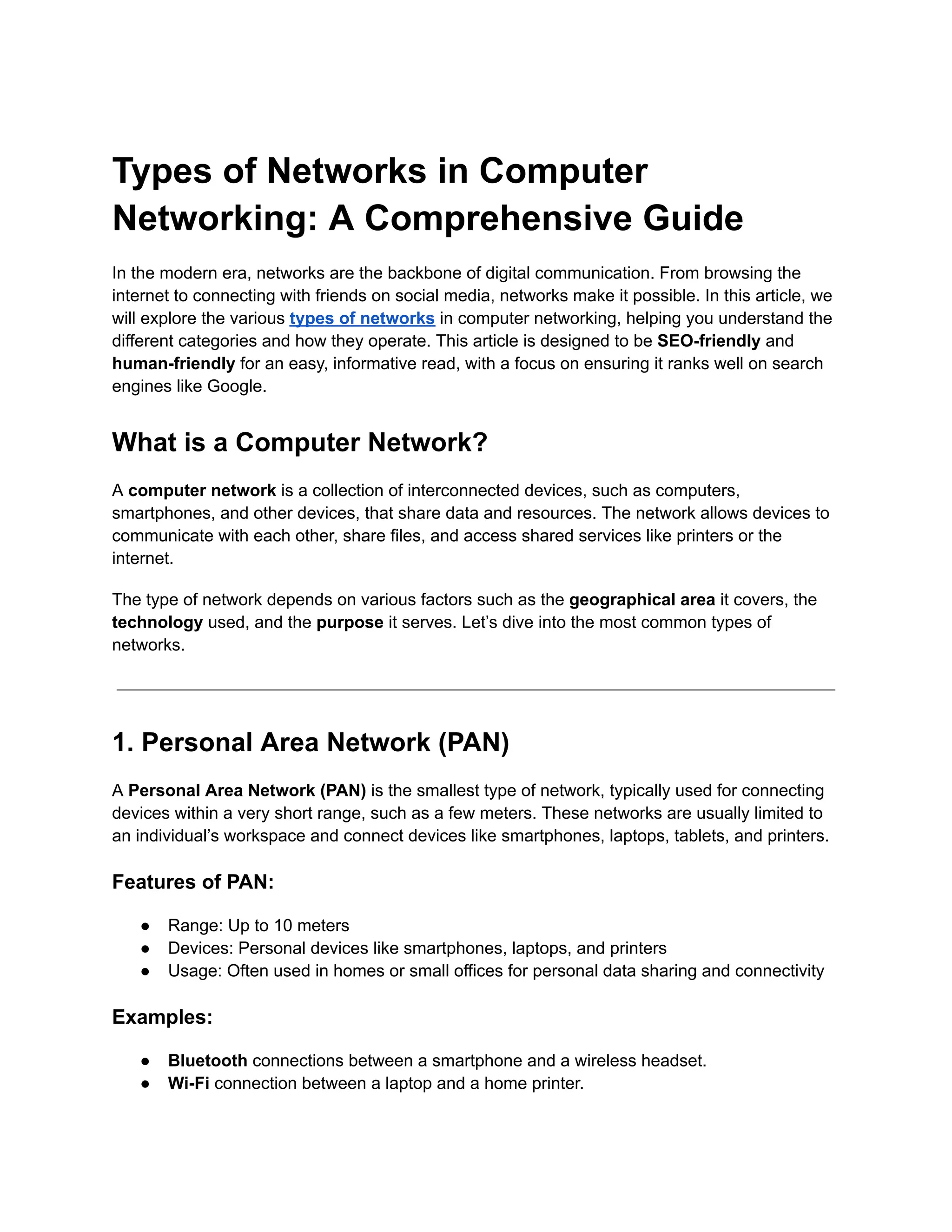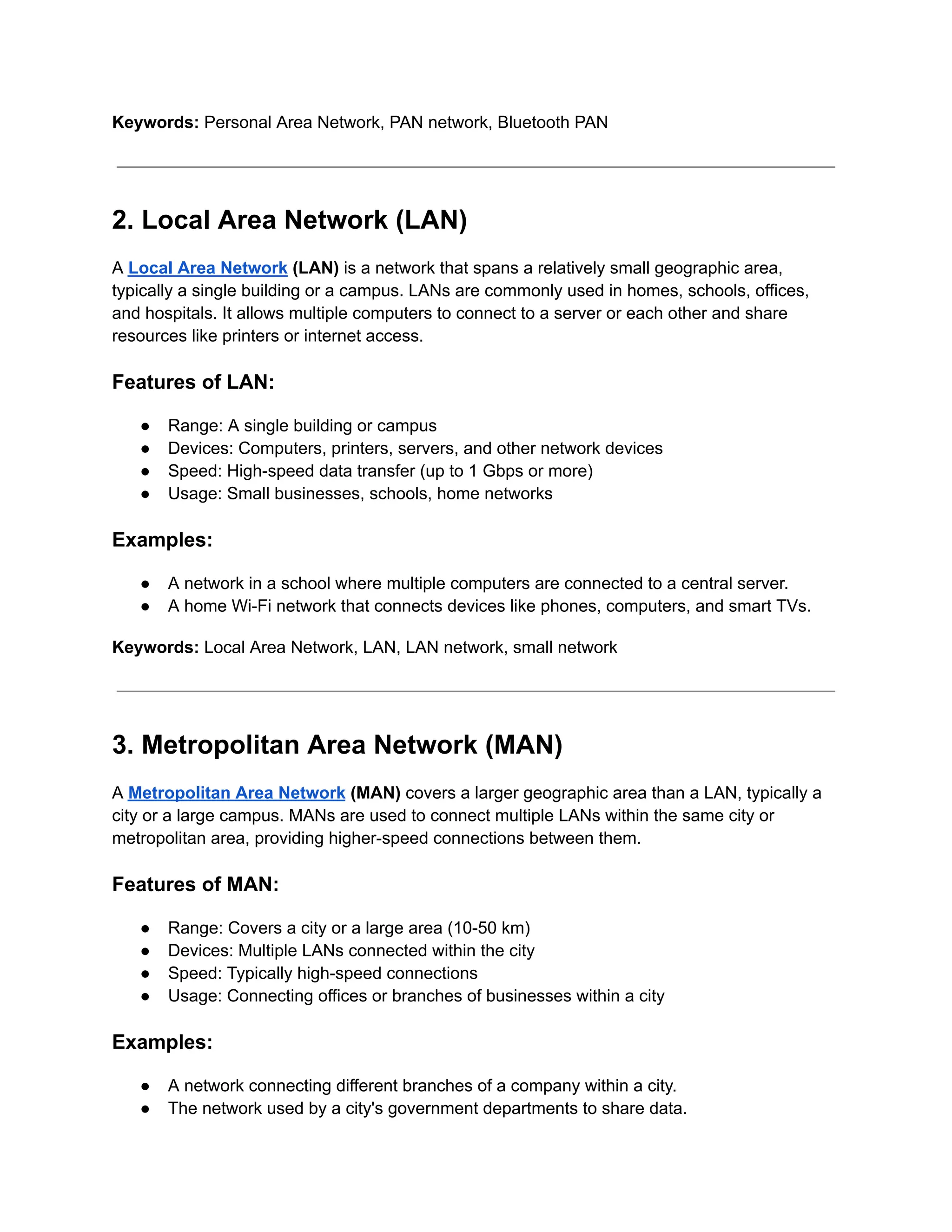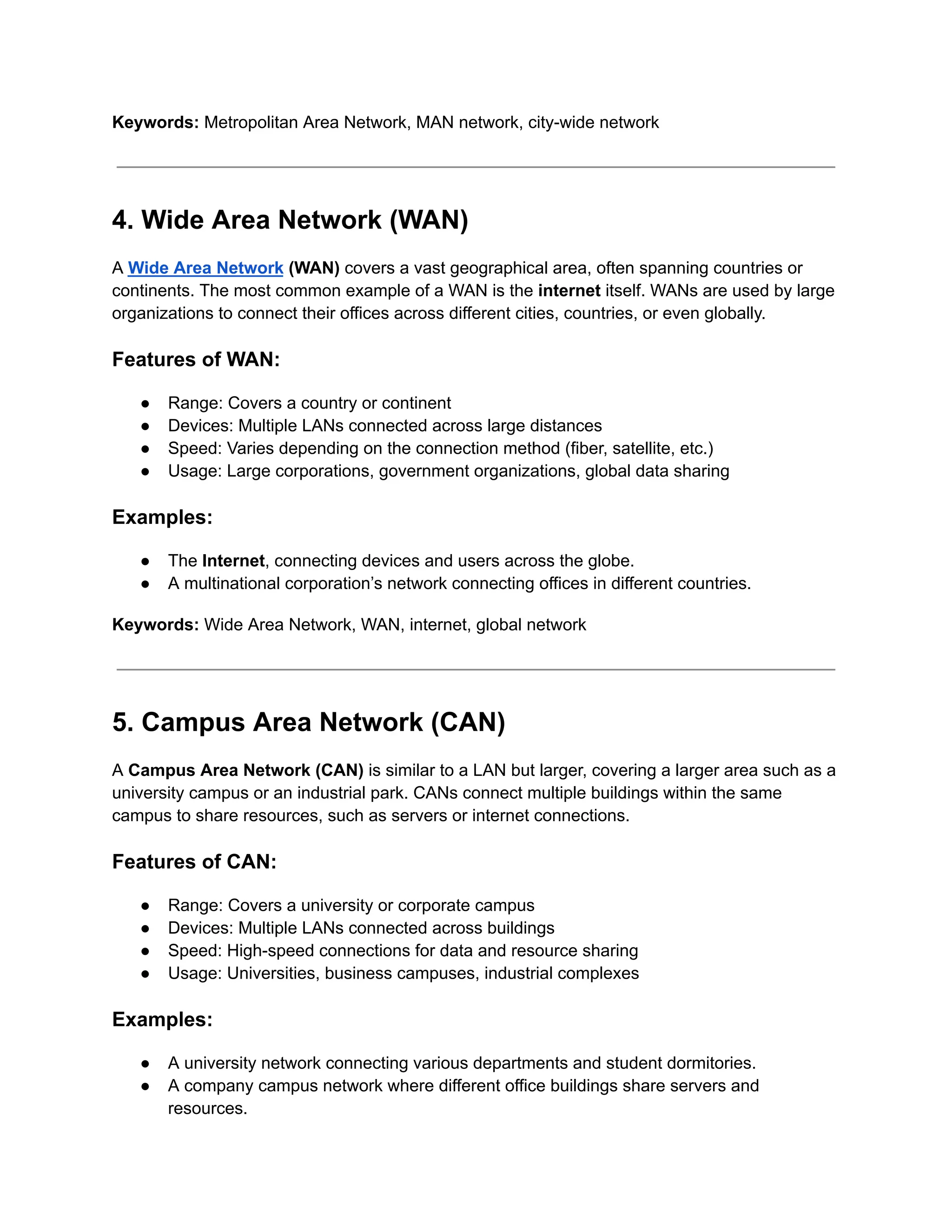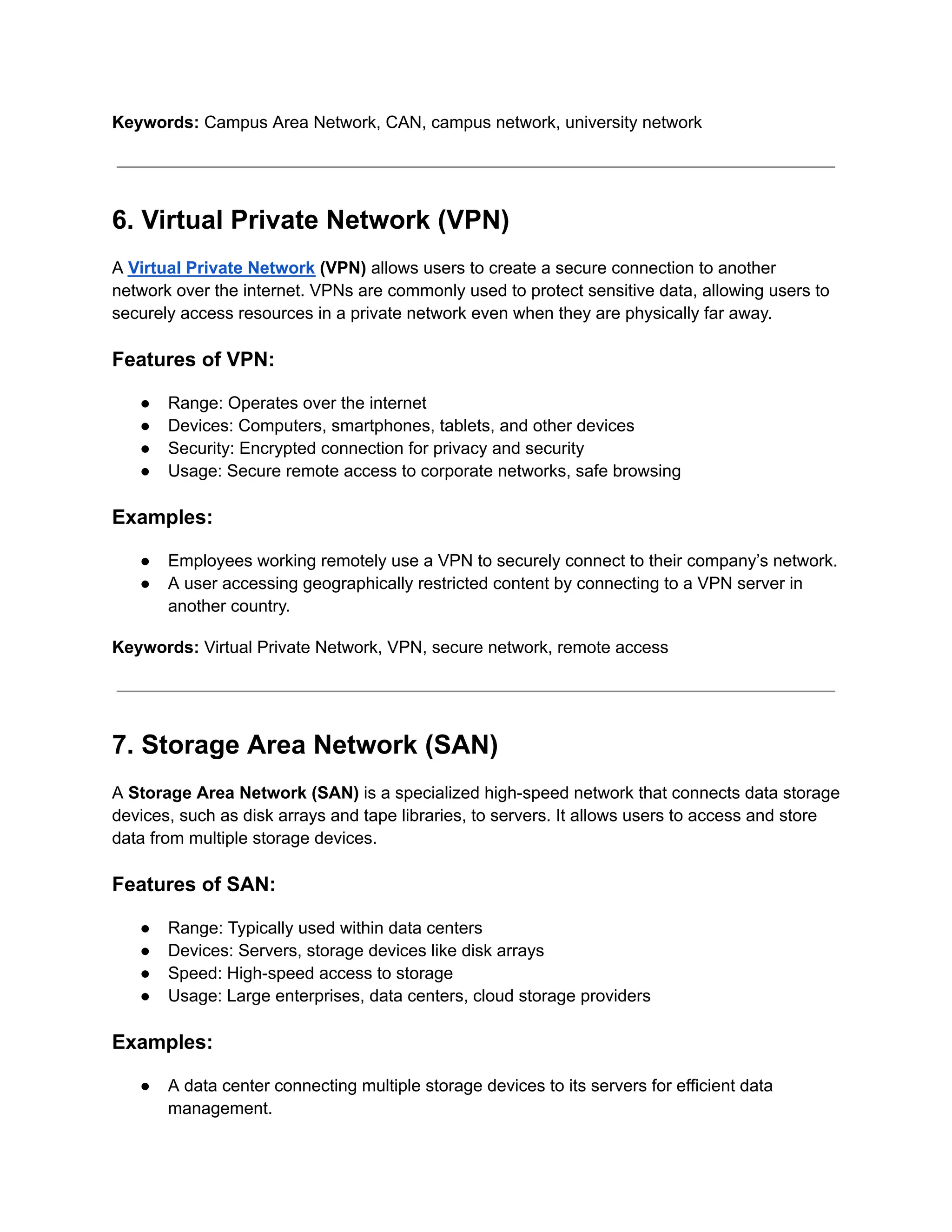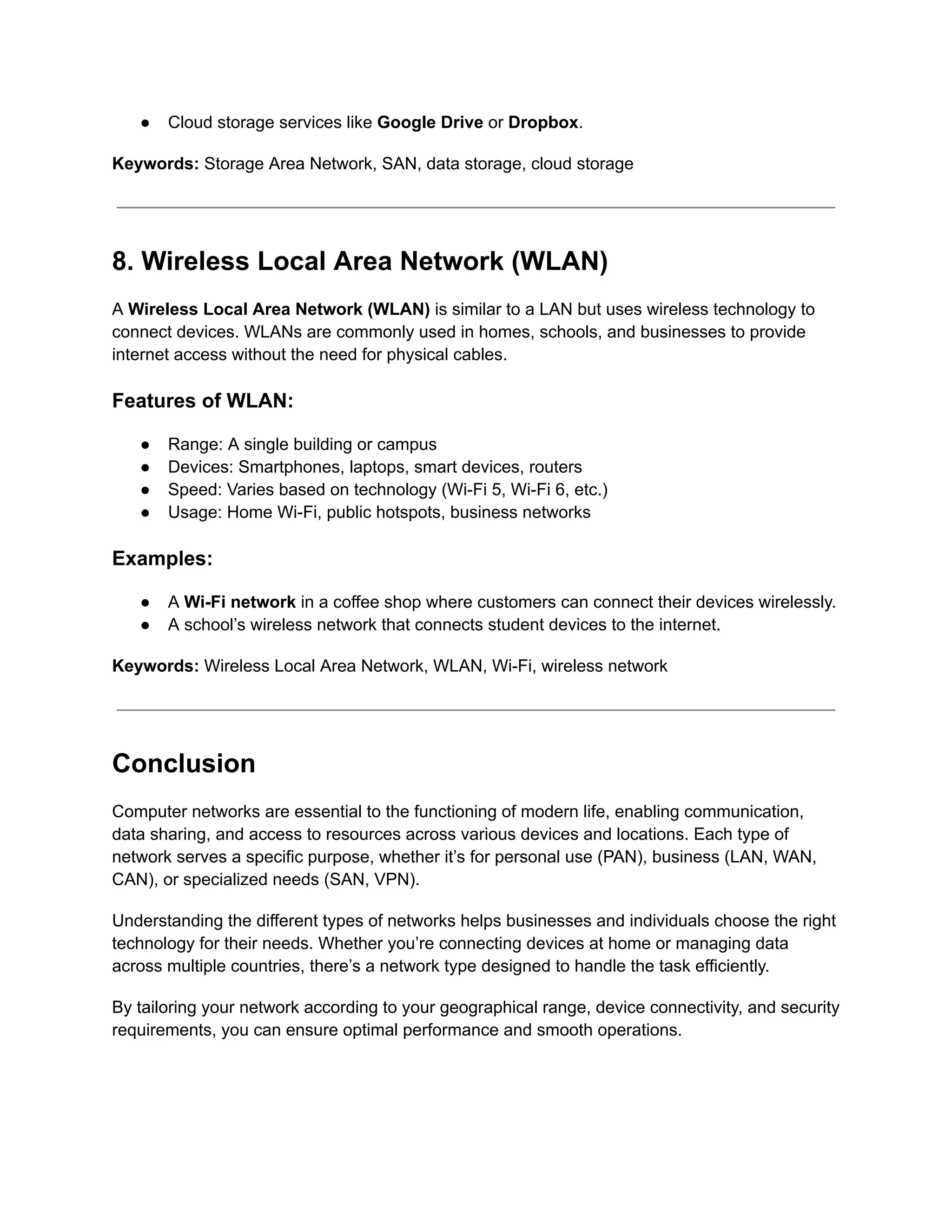The document provides a comprehensive overview of various types of computer networks, including Personal Area Networks (PAN), Local Area Networks (LAN), Metropolitan Area Networks (MAN), Wide Area Networks (WAN), Campus Area Networks (CAN), Virtual Private Networks (VPN), Storage Area Networks (SAN), and Wireless Local Area Networks (WLAN). Each network type is described in terms of its range, typical usage, devices connected, and examples, highlighting their importance in modern communication and data sharing. Understanding these networks assists individuals and businesses in selecting appropriate technologies for their communication needs.
